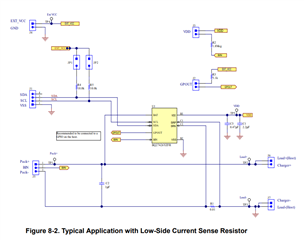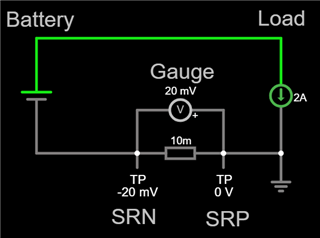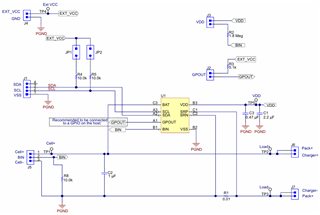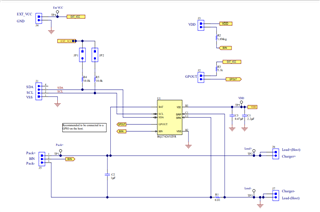Other Parts Discussed in Thread: BQ27427, , BQ27220
We would like to use the BQ27426YZFR battery fuel gauge in our product, but the very small DSBGA package complicates matters: in order to route the VSS pin, we would need to select a more expensive PCB manufacturer capable of achieving smaller trace widths and tighter tollerances, or capable of doing via-in-pad. Our product needs to be very competitive, so we can't afford an increase in PCB cost.
The BQ27427 fuel gauge (with integrated Rsense) would technically solve our issue, since the central VSS pad can be connected to the other VSS pin nearby. This eliminates the issue of routing a small trace between two outer pads. Unfortunately, our product can draw spikes of up to 5A for short periods (at least 500ms), which is above the maximum ratings of the integrated sense resistor.
My idea is to use the BQ27426YZFR and route VSS over the GPOUT pin, as shown in this picture:
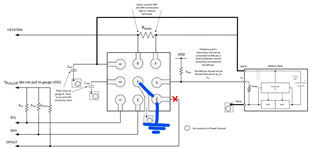
We will not be putting the fuel gauge in SHUTDOWN mode (I don't see a usecase, our product has a power switch), so I don't need GPOUT to exit SHUTDOWN. We also don't need the BAT_LOW signal that GPOUT can provide (as we can just read the state of charge from I²C). Finally, GPOUT is an open-drain output, so there is no risk of short circuit.
The datasheet, however, recommends to add a pull-up resistor if GPOUT is not used:

Can I safely get away with connecting GPOUT to VSS and routing over it? I don't want to end up with a malfunctioning fuel gauge that enters a weird state because it senses low on that pin.
Kind regards,
Marco Cipriani



